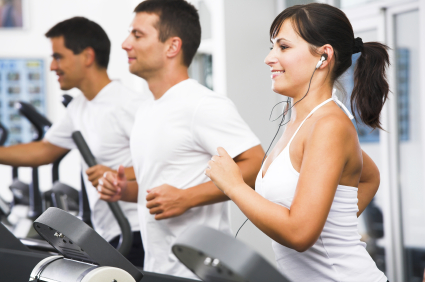Part 3 of this series on the many benefits of exercise focused on how exercise can help improve hormone balance. Exercise is also very important to help another hormone – namely insulin – do its job better, by combating a condition known as insulin resistance.
Blood sugar control is a major problem in this country. Diabetes and pre-diabetes now affects more than 100 million people in the United States and is projected to double in the coming decades if we don’t change our ways. Improper blood sugar control usually begins with something called “insulin resistance”.
Insulin resistance occurs when your cells no longer respond to insulin appropriately, causing improper blood sugar regulation and a decrease in metabolism. These shifts often lead to accelerated fat accumulation and elevated blood sugar, which can result in diabetes. Insulin resistance also increases inflammation and stress on the body, as well as creating neurotransmitter imbalances. These imbalances can cause you to experience fatigue, increased pain, and weight gain along with cravings for sweet and/or fatty foods, creating a self-perpetuating cycle that leads to continual weight gain.
Exercise and Blood Sugar Control
Getting regular exercise is a vitally important way to both prevent and correct insulin resistance. Exercise can improve insulin sensitivity in muscle and has been shown to consistently reduce insulin and fasting blood sugar levels. That’s because when you exercise, your muscles use more blood sugar as a source of energy. This happens not only while you are exercising but for hours afterwards. In fact, research has shown that a single bout of exercise can increase insulin sensitivity for up to 16 hours after exercise.
Regular exercise also helps you burn calories and can establish a great foundation to build your healthier lifestyle. When you exercise regularly, you naturally make better choices; it’s as though it strengthens not only your muscles, but your resolve and motivation to be healthier.
All exercise is not created equal in regards to insulin resistance. Research shows that combining resistance training with aerobic exercise may be the best strategy for reducing insulin resistance. This has the added benefit of also improving functional limitations in those that are overweight and obese better than doing either form of exercise alone or being sedentary. Begin with just 10-15 minutes of exercise daily, working your way up to at least 30 minutes four to five times/week. The higher the intensity the better and you need to incorporate some form of resistance/strength training to see the greatest benefit.
References
- Young SN. How to increase serotonin in the human brain without drugs. J Psychiatry Neurosci 2007;32(6):394-9.
- Jacobs BL, Fornal CA. Activity of serotonergic neurons in behaving animals. Neuropsychopharmacology 1999;21:9S-15S.
- Rueter LE, Jacobs BL. A microdialysis examination of serotonin release in the rat forebrain induced by behavioral/environmental manipulations. Brain Res 1996;739:57-69.
- Chaouloff F, Laude D, Guezennec Y, et al. Motor activity increases tryptophan, 5-hydroxyindoleacetic acid, and homovanillic acid in ventricular cerebrospinal fluid of the conscious rat. J Neurochem 1986;46:1313-6.
- Norris DO, Luckman D. A new twist on mental health. Personal Fitness Professional 2004 Jan;28-31.
- Wilson WM, Marsden CA. In vivo measurement of extracellular serotonin in the ventral hippocampus during treadmill running. Behav Pharmacol 1996;7:101-4.
- Gomez-Merino D, Bequet F, Berthelot M, et al. Site-dependent effects of an acute intensive exercise on extracellular 5-HT and 5-HIAA levels in rat brain. Neurosci Lett 2001;201:143-6.
- Meeusen R, Piacentini MF, Kempenaers F, et al. Brain neurotransmitter levels during exercise. Dtsch Z Sportmed 2001;52:361-8.
- Meeusen R, De Meirleir K. Exercise and brain neurotransmission. Sports Med 1995 Sep:20(3):160-88.
- Kelly GS. Insulin resistance: lifestyle and nutritional interventions. Altern Med Rev. 2000 Apr;5(2):109-32.
- Bhaskarabhatia KV, Birrer R. Physical activity and type 2 diabetes: Tailoring exercise to optimize fitness and glycemic control. The Physician and Sports Medicine 32:1:13-18, 2004.
- Roberts C. Type 2 diabetes and exercise: Catherine Roberts explores the issues surrounding the advice, support and information on exercise given by health professionals in primary care to people with diabetes. Primary Health Care 13:4:27-32, 2003.
- Davidson LE, Hudson R, Kilpatrick K, et al. Effects of exercise modality on insulin resistance and functional limitation in older adults: a randomized controlled trial. Arch Intern Med. 2009 Jan 26;169(2):122-31.
- Sigal RJ, Kenny GP, Wasserman DH, Castaneda-Sceppa C. Physical activity/exercise and type 2 diabetes. Diabetes Care 27;10:2518-2540, 2004.


